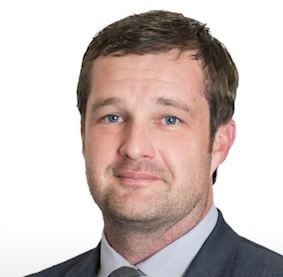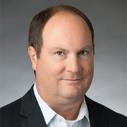
Stadium Tech Report interviews Matt Messick, CIO for the Dallas Cowboys, and Jeff Alexander, senior vice president for ExteNet Systems, about the new distributed antenna system (DAS) installed at AT&T Stadium.
When the building now known as AT&T Stadium opened in 2009, it arguably changed the way the world thought about large entertainment venues. And early on, the building was already well on its way to being one of the leaders in fan-facing wireless networks, with both a cellular distributed antenna system (DAS) and a Wi-Fi network that were both expanded on in following years.
But sometimes, like a star player whose talents are fading, networks reach the end of their useful life, and it’s time for a replacement. Such was the case with AT&T Stadium’s DAS network the past few years, as older equipment in an older design just couldn’t keep up with the growing demands of a mobile-device-centric fan base. Listen in as we talk to Dallas Cowboys chief information officer Matt Messick and Jeff Alexander, senior vice president for ExteNet Systems, as the two describe the process of first determining — and then building — a new network for the stadium of today and beyond.
Just a few years ago, Messick said AT&T Stadium had reached the point of no return with its legacy DAS system. The older equipment, he said, just couldn’t keep up with the ever-increasing demands for more bandwidth. “We really hit that wall,” Messick said.
But like a good front office that is constantly seeking to improve its talent, Messick and the team’s networking partners — including ExteNet Systems, which is the stadium’s network operator — had been busy forming a new pla, one more than two years in the making. That final plan threw out all the old DAS playbooks and instead built something completely new. The end result included: An incredibly dense network design, with 670 network zones, approximately a 10x increase from the previous DAS; an all-digital infrastructure that allows for more optical fiber, reducing the amount of telecom gear needed on premise, resulting in huge power and space savings; And cutting-edge MatSing Lens antennas to provide precise coverage to the seating bowl, with the ability to cover previous problem areas, like lower-bowl seating and on-field configurations, for concerts and other events.
“I feel like we’ve taken a step 10 to 20 years into the future,” Messick said. But getting there, he said, wasn’t a simple journey.
Making plans, changing them, and moving forward
Editor’s note: This is the third in our new series of Stadium Tech Report podcasts — take a listen and let us know what you think! Thanks to our podcast title sponsors, ExteNet Systems and MatSing, for their support.
On one hand, being able to re-do a DAS now is good timing, since there is a great amount of change in the technology available. New spectrum bands and 5G services are also coming into play, with promises of more bandwidth and decreased latency. But the shopper’s dilemma was: Which path to choose?
Listen to Stadium Tech Report podcasts on Spotify!
“We had seen and heard about some venues that put new DAS deployments with antennas under the seats, like Wi-Fi, but also heard that method had some issues,” Messick said. At one point, he said the Cowboys and their networking partners simply stopped the direction they were headed, and went down a new path.

“We hit the reset button,” Messick said.
Alexander, leading the team from ExteNet, said one of the positives of the new DAS design was the fact that the Cowboys also partnered closely with all the main U.S. wireless carriers, which is not always standard operating procedure in a new build. AT&T, he said, was particularly helpful in providing some leadership with the carrier group, including sharing previous DAS data with the design team, again, not something that always happens.
Subscribe to the Stadium Tech Report podcast on iTunes!
When the final blueprint was decided on — with its unheard-of level of sector density, and a big reliance on the overhead MatSing lens antennas — Alexander did say there were some nervous moments.
“We were asking a lot of people to do something they never did before,” he said. But early results from the first events with full houses were confirmation that the Cowboys and ExteNet had made the right choices.
“AT&T said it saw 10 times the traffic it had ever seen before,” Alexander said. “It’s working as good as we could hope.”
Covering the floor expands event options
Thanks to the unique capabilities of the MatSing antennas — which provide direct line-of-sight coverage from farther away than other antenna technologies — the Cowboys can now provide top-level connectivity to the stadium floor, a critical necessity for hosting non-football events like concerts or the recent Wrestlemania 38.
“In the past, having to cover the field [with wireless services] was always scary,” Messick said. “We had to augment the networks with custom arrangements. Now, none of that is necessary. Now, we have the confidence we can deliver.”
Technical production for the Stadium Tech Report podcast is led by Creative Director Dan Grimsley, and Digital Designer Jackie Nguyen. Web and design work is by David Fares and John David. All contents of the Stadium Tech Report podcast are copyright, Stadium Tech Report. Audio, video and print content may not be re-used without the express written consent of Stadium Tech Report.


